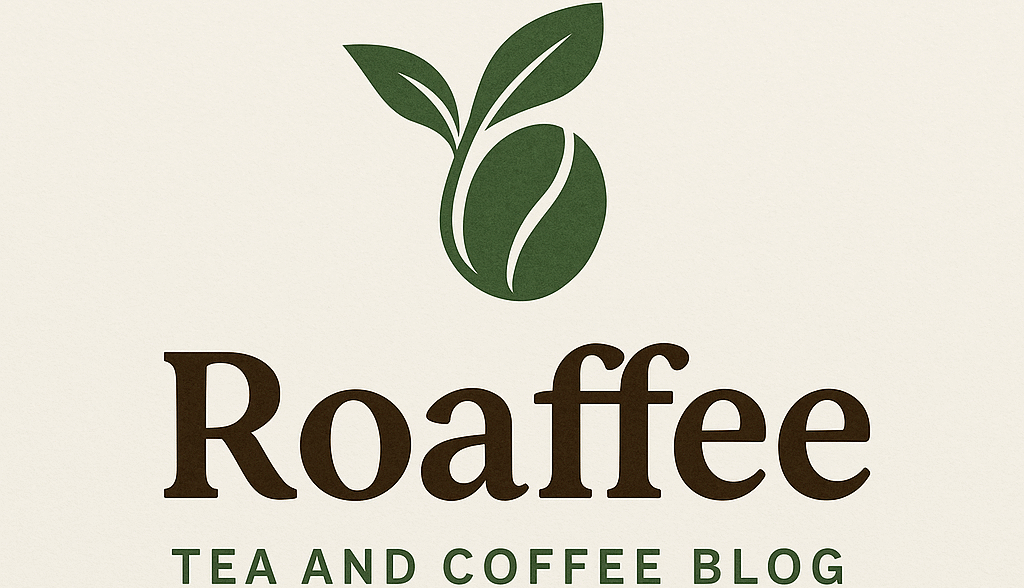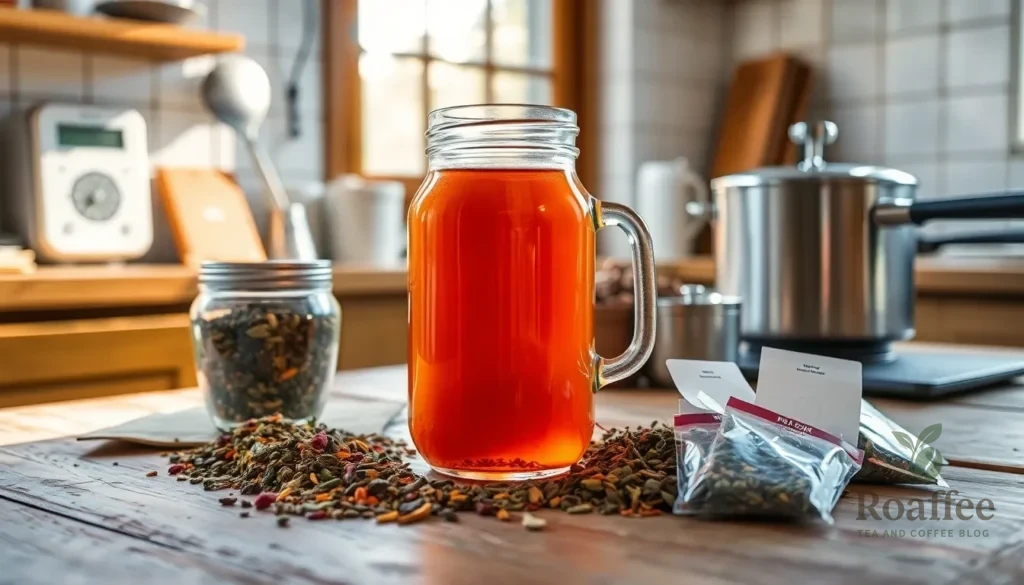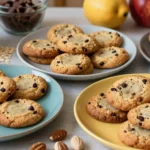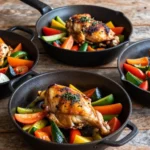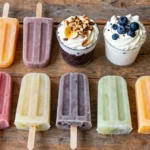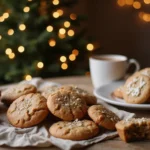We’ve discovered the perfect way to transform your favorite tea into a versatile sweetener that’ll revolutionize your beverages and desserts. Tea syrup captures all the complex flavors of your chosen tea blend while adding that perfect touch of sweetness that makes everything taste extraordinary.
This simple technique works with virtually any tea variety – from classic Earl Grey to exotic jasmine green tea. You’ll be amazed at how this concentrated liquid gold elevates everything from cocktails and mocktails to pancakes and ice cream. The best part? You probably already have everything you need in your kitchen right now.
Why you’ll love this recipe: It’s incredibly easy to make and keeps for weeks in the refrigerator. Plus it’s completely customizable – adjust the sweetness level and experiment with different tea combinations to create your signature flavor profile.
What Is Tea Syrup
Tea syrup combines the aromatic essence of brewed tea with the sweetness of sugar to create a concentrated liquid sweetener. We make this flavorful syrup by steeping tea leaves in hot water and then dissolving sugar into the resulting brew. The process creates a versatile ingredient that captures the unique characteristics of your chosen tea variety while adding sweetness to beverages and desserts.
The syrup maintains the distinct flavor profile of the tea you select. Black tea varieties produce rich and robust syrups with malty undertones. Green tea creates lighter syrups with grassy and vegetal notes. Herbal teas like chamomile or mint yield syrups with their signature floral or refreshing qualities. Each type of tea brings its own personality to the final product.
We classify tea syrup as a simple syrup variation that incorporates tea as a flavoring agent. Unlike plain simple syrup made with just sugar and water, tea syrup adds complexity and depth to recipes. The sugar content typically matches a 1:1 ratio with the tea liquid, creating a balanced sweetness that doesn’t overpower the tea’s natural flavors.
Tea syrup offers exceptional versatility in culinary applications. We use it to sweeten iced teas without diluting their strength. Cocktail enthusiasts appreciate how it adds both sweetness and flavor complexity to mixed drinks. Bakers incorporate tea syrups into cakes, cookies, and frosting recipes for unique taste profiles. The syrup also works beautifully drizzled over pancakes, waffles, or ice cream.
The shelf life of properly made tea syrup extends up to one month when stored in the refrigerator. We recommend keeping it in a clean glass jar or bottle with a tight fitting lid. The high sugar content acts as a natural preservative, preventing bacterial growth while maintaining the syrup’s quality and flavor integrity.
Essential Equipment and Tools
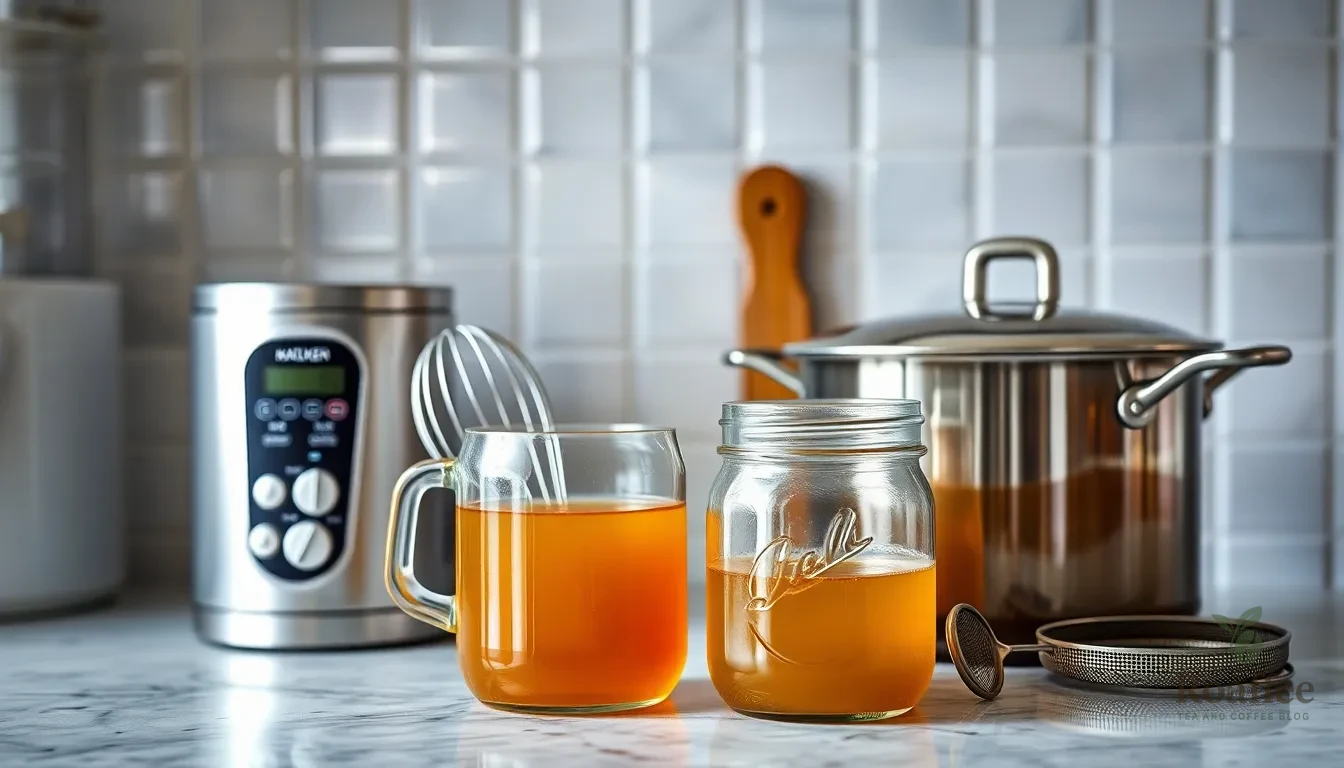
Creating tea syrup requires minimal equipment that most home cooks already have in their kitchen. We focus on tools that ensure proper brewing and accurate measurements for consistent results.
Measuring and Mixing Tools
A digital kitchen scale provides the most accurate measurements for both tea and sugar. We recommend measuring ingredients by weight rather than volume for professional results. Standard measuring cups work well as an alternative, though precision may vary slightly.
A large mixing spoon or whisk helps dissolve sugar completely into the hot tea. Stainless steel or heat-resistant silicone utensils work best since they won’t react with the tea’s natural compounds or absorb flavors.
Brewing Equipment
A medium saucepan serves as the primary vessel for heating water and dissolving sugar. Choose a pan with a heavy bottom to ensure even heat distribution and prevent scorching. The size should accommodate at least 2 cups of liquid with room for stirring.
Tea infusers or fine-mesh strainers are essential for removing tea leaves from the finished syrup. Ball infusers work well for loose leaf teas, while permanent tea filters accommodate larger quantities. We prefer stainless steel mesh strainers for their durability and easy cleaning.
Straining and Storage
A fine-mesh strainer or cheesecloth removes any remaining tea particles for a smooth, clear syrup. Double straining through progressively finer meshes produces the cleanest final product.
Glass jars or bottles with tight-fitting lids provide ideal storage containers. Mason jars work excellently for their airtight seals and easy cleaning. We avoid plastic containers as they can absorb flavors and odors over time.
A funnel makes transferring the hot syrup into storage containers safer and cleaner. Choose a wide-mouth funnel to prevent spills and allow easy pouring of the thick liquid.
Ingredients
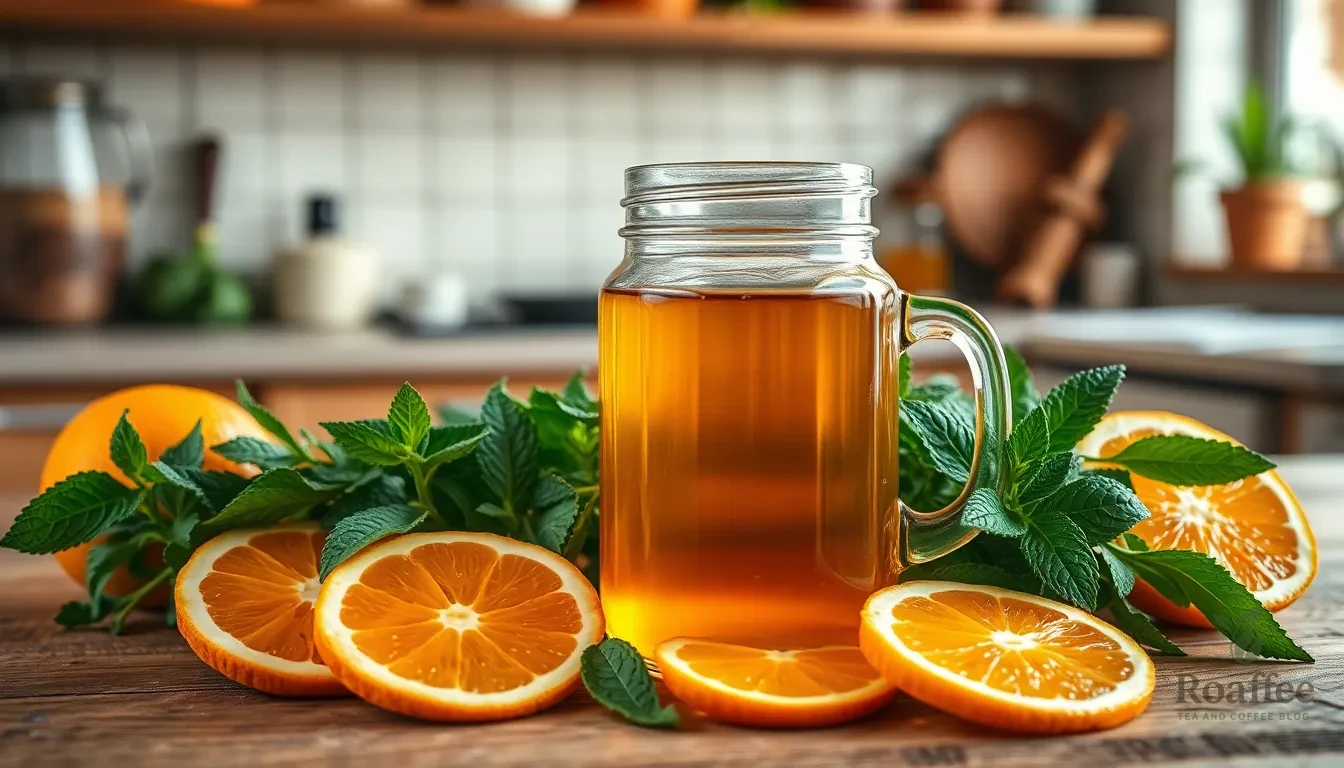
We’ve simplified our tea syrup recipe to use just a few essential ingredients that deliver exceptional flavor. Our measurements create the perfect balance of sweetness and tea essence.
For Basic Tea Syrup
- 2 cups water – filtered water produces the cleanest taste
- 4 tablespoons loose leaf tea or 8 tea bags – any variety works beautifully
- 1 cup granulated sugar – white sugar creates a neutral base that highlights tea flavors
- 1/4 teaspoon vanilla extract (optional) – adds warmth and depth
For Flavored Variations
- Earl Grey Tea Syrup: Replace basic tea with Earl Grey and add 1 tablespoon fresh lemon zest
- Mint Tea Syrup: Use mint tea and include 2 tablespoons fresh mint leaves during steeping
- Chai Tea Syrup: Substitute chai tea and incorporate 1 cinnamon stick plus 3 whole cloves
- Honey Tea Syrup: Replace half the sugar with 1/2 cup honey for a floral sweetness
- Citrus Tea Syrup: Add 2 tablespoons orange zest and 1 tablespoon lime juice to any tea base
- Ginger Tea Syrup: Include 1 tablespoon fresh grated ginger during the steeping process
Instructions
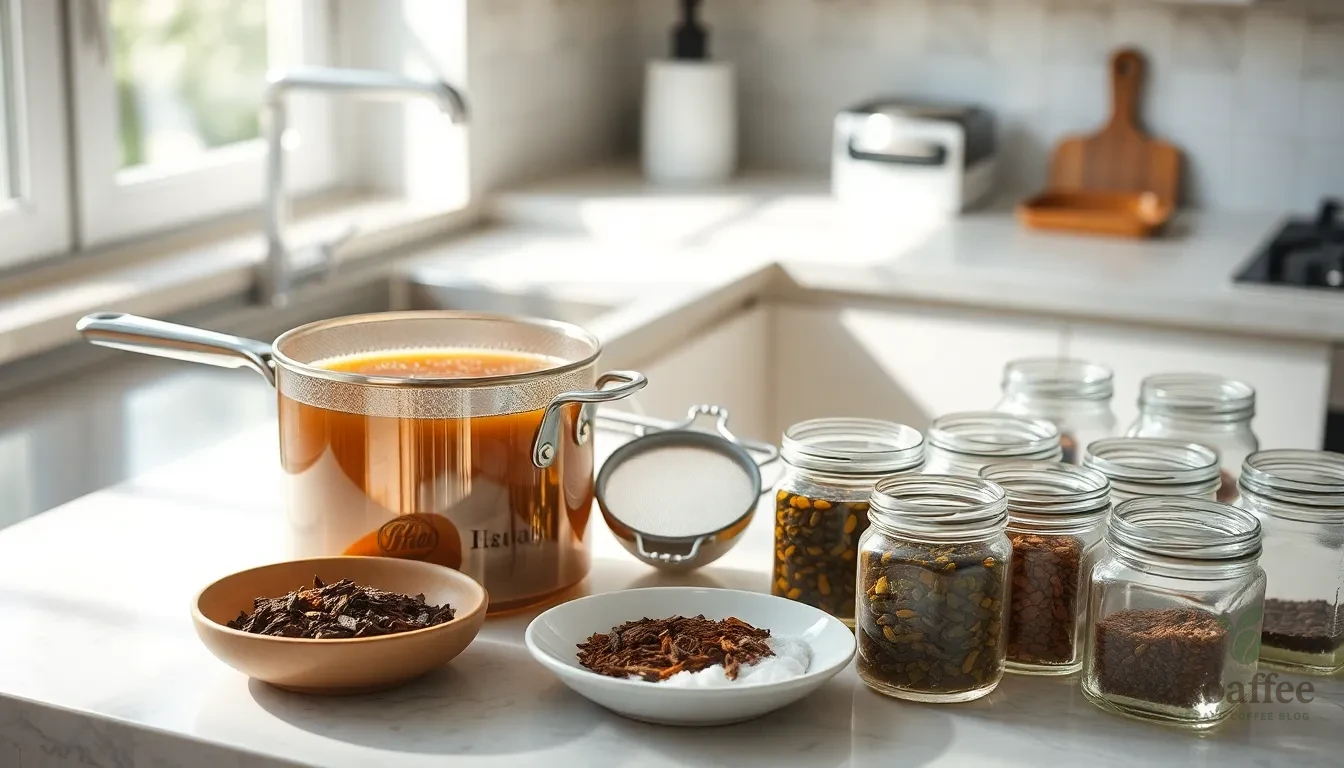
Creating tea syrup requires careful timing and attention to detail to achieve the perfect balance of tea flavor and sweetness. Follow these step-by-step instructions to create your own homemade tea syrup that will elevate your beverages and desserts.
Prep
We start by gathering all ingredients and equipment before beginning the brewing process. Measure 4 tablespoons of loose leaf tea or prepare 8 tea bags for steeping. Set up your fine-mesh strainer or tea infuser near the workspace for easy access. Fill a medium saucepan with 2 cups of filtered water and place it on the stovetop over medium-high heat. Have your measuring cup ready for the sugar and ensure your storage container is clean and dry.
Brew the Tea
We heat the water until it reaches the appropriate temperature for your chosen tea variety. Black teas require boiling water at 212°F while green teas need cooler water at 175-185°F. Remove the saucepan from heat once the water reaches the correct temperature. Add your tea leaves or tea bags to the hot water immediately. Steep the tea for the recommended time: 3-5 minutes for black tea, 2-3 minutes for green tea, and 5-7 minutes for herbal teas. The longer steeping time creates a more concentrated tea base that won’t become diluted when sugar is added.
Make the Simple Syrup
We combine 1 cup of granulated sugar with the hot brewed tea while it’s still warm. Stir the mixture continuously with a large spoon or whisk until the sugar completely dissolves. The heat from the tea helps the sugar dissolve more efficiently than cold liquid would. Continue stirring for 2-3 minutes to ensure no sugar crystals remain at the bottom of the pan. The mixture should appear clear and smooth once all sugar has dissolved properly.
Combine and Strain
We remove all tea leaves or tea bags from the sweetened mixture using our prepared strainer or by lifting out the tea infuser. Pour the liquid through a fine-mesh strainer into a clean mixing bowl to catch any remaining tea particles. Press the tea leaves gently against the strainer to extract maximum flavor without forcing bitter compounds into the syrup. Add vanilla extract or other flavorings at this stage if desired. Stir the mixture one final time to incorporate any additional ingredients evenly.
Cool and Store
We allow the tea syrup to cool to room temperature before transferring it to storage containers. Pour the cooled syrup into clean glass jars or bottles using a funnel to prevent spills. Seal the containers tightly with airtight lids to maintain freshness and prevent contamination. Label each container with the tea variety and date of preparation for easy identification. Store the finished tea syrup in the refrigerator where it will maintain its quality for up to one month.
Popular Tea Syrup Variations
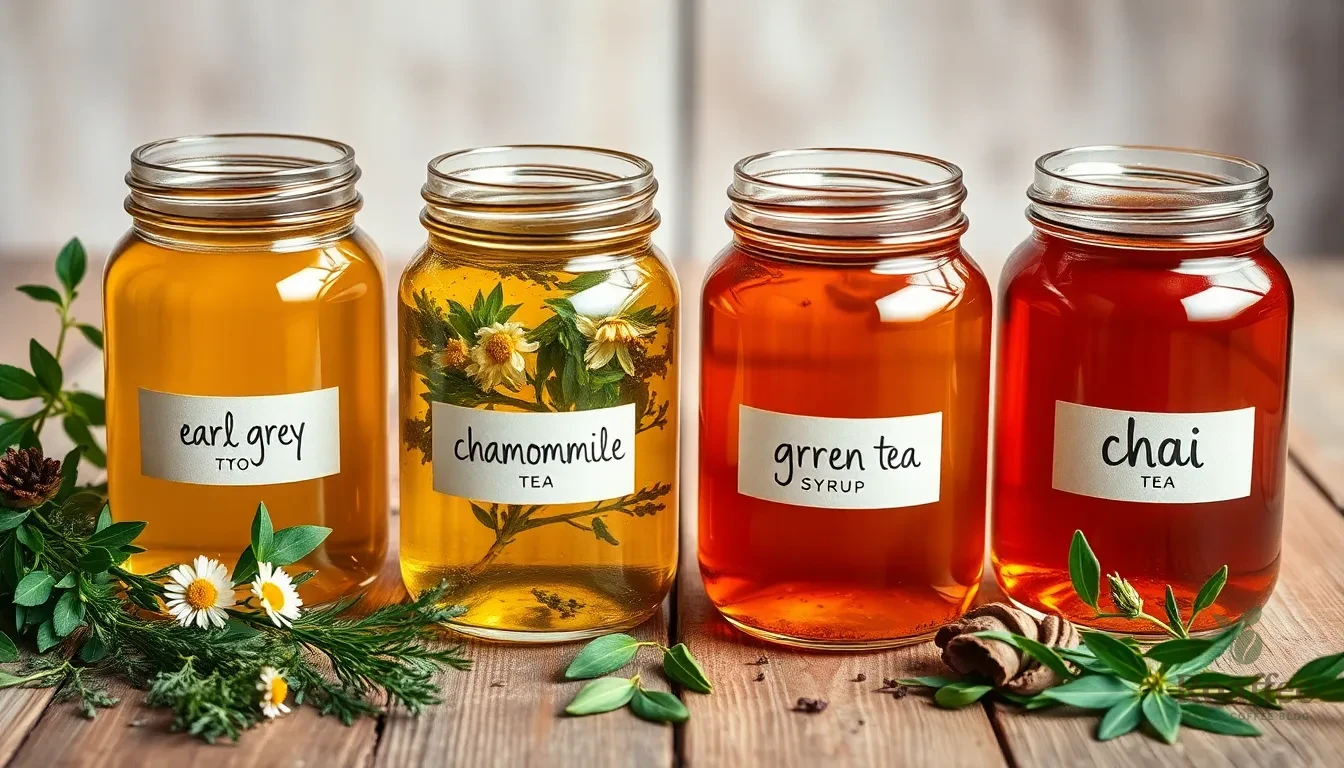
Building on our basic tea syrup foundation, we can explore specialty variations that showcase distinct tea characteristics. These popular variations transform ordinary beverages and desserts into sophisticated culinary experiences.
Earl Grey Tea Syrup
Earl Grey tea syrup delivers sophisticated bergamot citrus notes that elevate both sweet and savory applications. We steep 4 tablespoons of loose Earl Grey tea in 2 cups of boiling water for 4 minutes to extract the essential oils properly. The bergamot’s floral intensity pairs beautifully with vanilla ice cream and creates exceptional cocktails when combined with gin or vodka.
This variation requires careful timing since over-steeping produces bitter tannins that overpower the delicate bergamot essence. We recommend using high-quality Earl Grey tea for the most pronounced flavor profile. The finished syrup maintains its distinctive aroma for weeks when stored in glass containers.
Chamomile Tea Syrup
Chamomile tea syrup offers gentle floral sweetness with subtle honey undertones that complement desserts and herbal beverages. We use 6 tablespoons of dried chamomile flowers steeped in 2 cups of hot water at 200°F for 6 minutes to maximize the flower’s natural oils. The longer steeping time allows chamomile’s delicate flavors to fully develop without becoming overly medicinal.
This syrup transforms ordinary pancakes and waffles into elegant breakfast treats. We often drizzle chamomile syrup over fresh fruit salads or incorporate it into homemade ice cream bases. The natural calming properties of chamomile make this variation perfect for evening beverages.
Green Tea Syrup
Green tea syrup provides clean grassy notes with subtle vegetal complexity that enhances both Asian-inspired dishes and modern cocktails. We steep 5 tablespoons of high-quality green tea in 2 cups of water heated to 175°F for 3 minutes to prevent bitterness. The lower temperature preserves green tea’s delicate flavor compounds while extracting sufficient strength for syrup making.
This variation works exceptionally well in matcha lattes and green tea ice cream recipes. We frequently use green tea syrup to glaze salmon or chicken for an umami-rich finish. The light color and subtle flavor make it ideal for desserts where we want tea essence without overpowering sweetness.
Chai Tea Syrup
Chai tea syrup combines warming spices like cinnamon, cardamom, and ginger with robust black tea for a complex flavor profile. We steep 4 tablespoons of loose chai tea blend in 2 cups of boiling water for 5 minutes to extract the full spice intensity. The extended steeping time allows the spices to infuse completely while the black tea base provides necessary tannins for structure.
This variation transforms ordinary coffee drinks into spiced beverages and adds warming notes to baked goods. We particularly enjoy chai syrup in homemade lattes and as a glaze for autumn desserts. The spice blend varies by manufacturer, so we recommend tasting different chai teas to find your preferred flavor balance.
Storage and Shelf Life
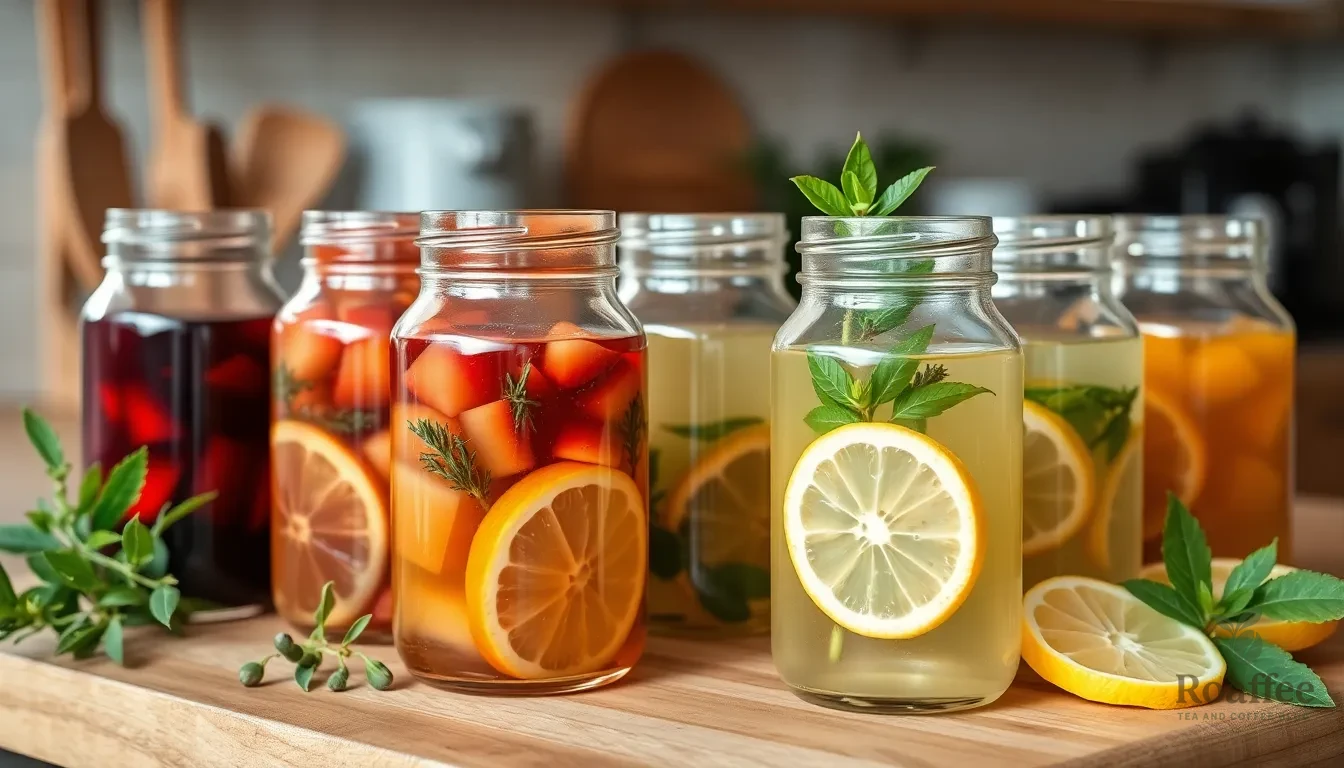
Proper storage extends the life of our tea syrup while maintaining its vibrant flavor and quality. We recommend transferring the cooled syrup into clean glass jars or bottles with tight-fitting lids immediately after preparation. Glass containers work best because they don’t absorb flavors or odors like plastic containers might.
Refrigerator Storage
Our tea syrup stays fresh in the refrigerator for up to one month when stored correctly. The high sugar content acts as a natural preservative, inhibiting bacterial growth and maintaining the syrup’s consistency. We should always use clean utensils when dispensing the syrup to prevent contamination.
| Storage Method | Duration | Temperature |
|---|---|---|
| Refrigerator | Up to 1 month | 35-40°F |
| Room Temperature | 1-2 weeks | 65-70°F |
| Freezer | Up to 6 months | 0°F |
Signs of Spoilage
We need to watch for several indicators that our tea syrup has gone bad. Cloudy appearance, unusual odors, or mold growth signal that the syrup should be discarded. Fresh tea syrup maintains its original color and clarity throughout its shelf life.
Labeling and Organization
We recommend labeling each container with the tea variety and preparation date. This practice helps us track freshness and rotate our stock properly. Different tea syrups can be stored together, but clear labeling prevents confusion when selecting flavors for recipes.
Extending Shelf Life
Adding a splash of vodka or other high-proof alcohol can extend our tea syrup’s shelf life by several weeks. The alcohol acts as an additional preservative without significantly altering the flavor profile. We use approximately one tablespoon per cup of syrup for optimal preservation.
Creative Ways to Use Tea Syrup
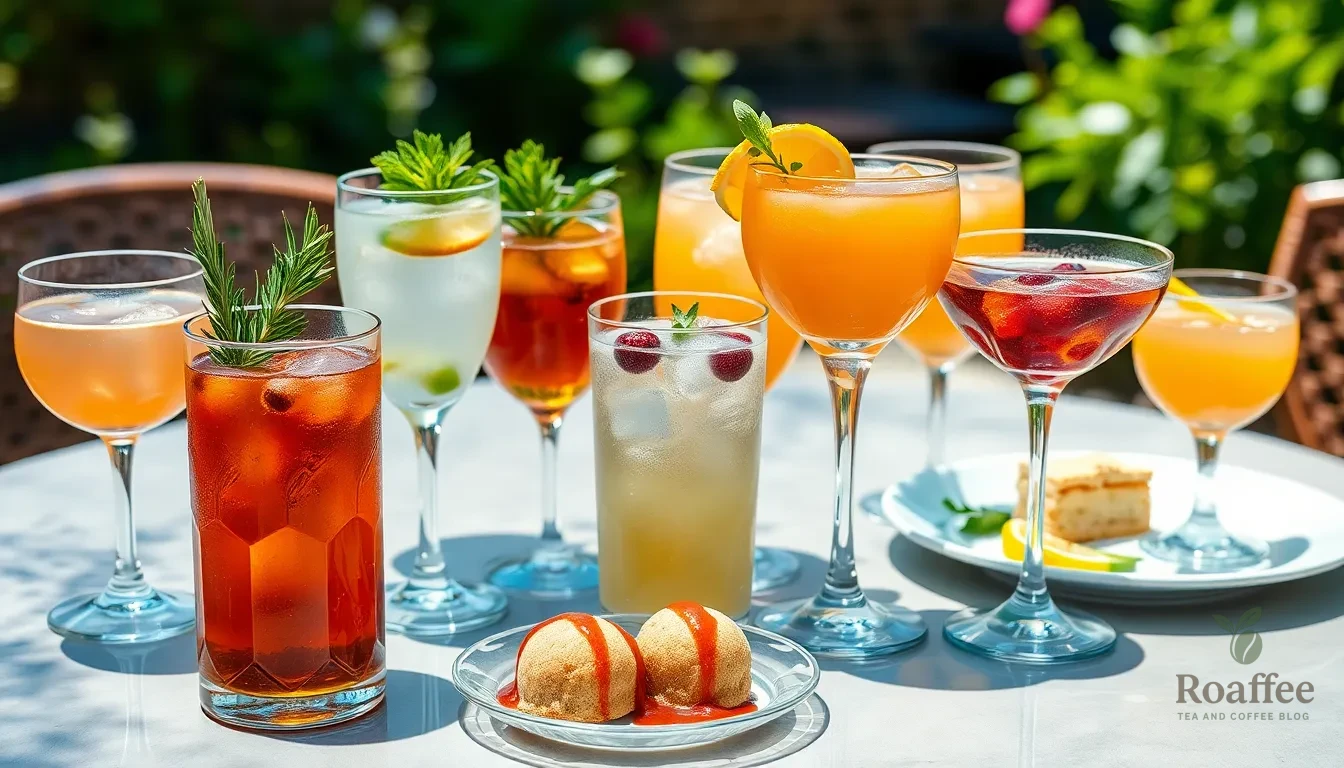
Tea syrup transforms ordinary beverages and treats into extraordinary culinary experiences. We’ll explore the most versatile applications that showcase the unique flavors captured in each variety.
In Cocktails and Mocktails
Earl Grey tea syrup elevates gin-based cocktails with its bergamot citrus notes. We recommend adding 1-2 tablespoons to a classic gin and tonic for a sophisticated twist. Chamomile tea syrup brings floral sweetness to vodka cocktails and creates refreshing alcohol-free beverages when mixed with sparkling water.
Green tea syrup pairs beautifully with whiskey-based drinks and adds depth to Asian-inspired cocktails. We often incorporate it into sake-based beverages for an authentic flavor profile. Chai tea syrup creates warming winter cocktails when combined with rum or bourbon and adds complexity to spiced mocktails.
In Coffee and Lattes
Black tea syrup enhances espresso drinks with rich tannins that complement coffee’s natural bitterness. We substitute it for traditional simple syrup in iced coffee drinks to create unique flavor combinations. Earl Grey tea syrup transforms regular lattes into London Fog-inspired beverages.
Chai tea syrup eliminates the need for multiple spices in coffee drinks and provides consistent flavor in every cup. We use it to create custom seasonal beverages and enhance cold brew coffee with warming spice notes. Green tea syrup adds subtle earthiness to matcha lattes and creates innovative coffee shop-style drinks at home.
For Desserts and Baking
Tea syrup infuses cakes and cupcakes with concentrated flavor without adding extra liquid to batters. We brush it onto cake layers for moisture and flavor enhancement. Earl Grey tea syrup creates sophisticated buttercream frostings and adds elegance to vanilla-based desserts.
Chamomile tea syrup sweetens fruit salads and enhances custards with gentle floral notes. We incorporate it into ice cream bases for unique frozen treats and use it to poach pears or other fruits. Green tea syrup adds complexity to white chocolate desserts and creates interesting flavor contrasts in sweet applications.
As a Pancake or Waffle Topping
Traditional breakfast syrups pale in comparison to the complexity that tea syrups provide. We drizzle Earl Grey tea syrup over pancakes for an elevated brunch experience that impresses guests. Chamomile tea syrup brings subtle floral sweetness to weekend breakfasts.
Chai tea syrup transforms ordinary waffles into spiced treats reminiscent of coffee shop specialties. We warm the syrup slightly before serving to enhance its aromatic qualities. Green tea syrup creates unexpected flavor combinations when paired with fresh berries and adds sophistication to simple breakfast items.
Tips for Perfect Tea Syrup
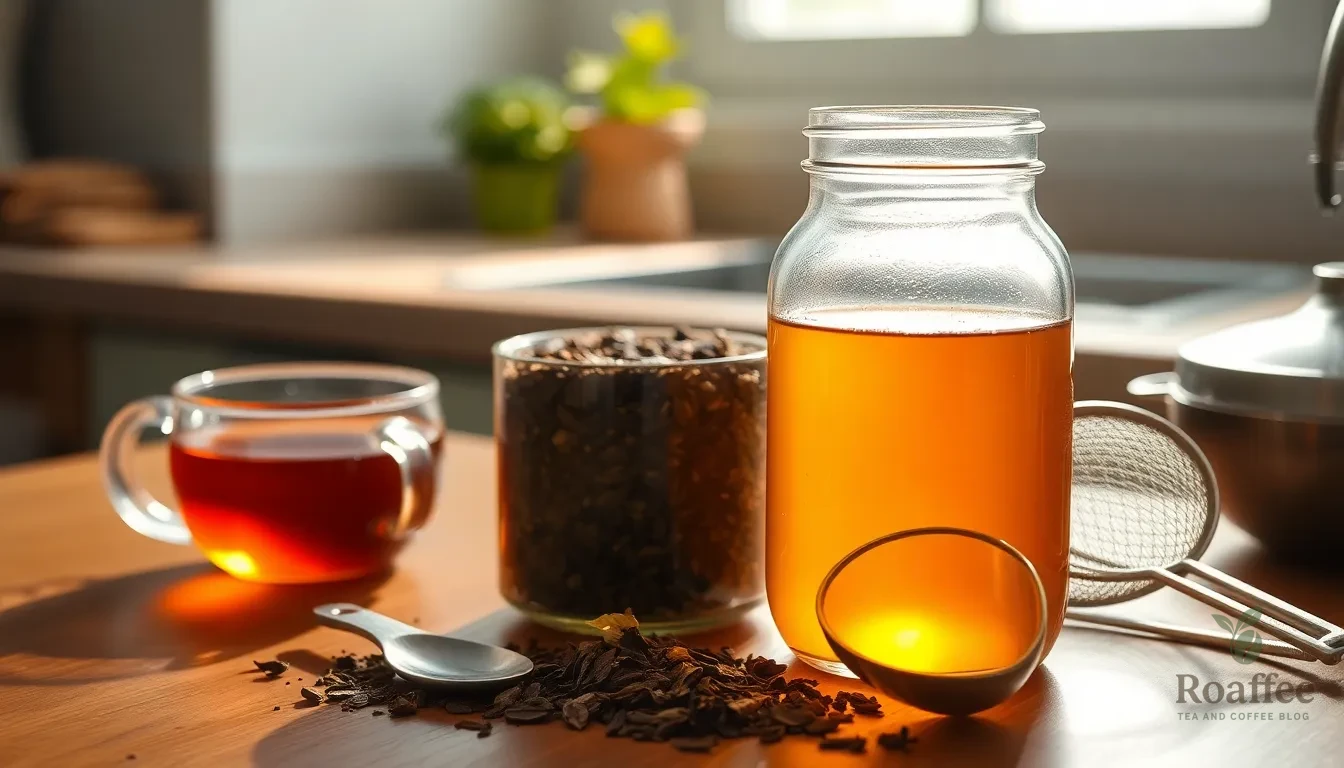
Choose the Right Tea to Water Ratio
We recommend using 2 tablespoons of loose leaf tea per cup of water for optimal flavor extraction. Strong tea concentrate creates more flavorful syrup since the sugar dilutes the tea’s intensity. Premium loose leaf teas produce superior results compared to tea bags due to their higher essential oil content and better leaf quality.
Master Your Steeping Temperature and Time
Different teas require exact brewing temperatures to avoid bitterness and maximize flavor complexity. We steep black teas at 200-212°F for 3-5 minutes while green teas perform best at 175-185°F for 2-3 minutes. Herbal teas can handle boiling water and longer steeping times of 5-7 minutes without developing harsh flavors.
| Tea Type | Temperature | Steeping Time |
|---|---|---|
| Black Tea | 200-212°F | 3-5 minutes |
| Green Tea | 175-185°F | 2-3 minutes |
| White Tea | 175-185°F | 2-4 minutes |
| Herbal Tea | 212°F | 5-7 minutes |
Dissolve Sugar Completely
We add sugar to the hot tea while it’s still warm to ensure complete dissolution. Granulated sugar works best for clear syrups while raw sugar creates deeper flavors with slight caramel notes. Stirring continuously prevents crystallization and creates smooth consistency throughout the syrup.
Strain Thoroughly
Fine mesh strainers or cheesecloth remove all tea particles that could cause cloudiness or continued steeping. We strain the syrup twice if using broken leaf teas or tea bags to achieve crystal clear results. Pressing tea leaves during straining releases tannins and creates bitter flavors.
Cool Properly Before Storage
Room temperature cooling prevents condensation inside storage containers that can dilute the syrup. We transfer cooled syrup into sterilized glass containers using a funnel to minimize waste and maintain cleanliness. Hot syrup can crack glass containers and compromise seal integrity.
Test Sweetness Levels
We taste the syrup at room temperature since heat intensifies sweetness perception. Adding sugar incrementally allows for precise sweetness control without over-sweetening. Different tea varieties require different sugar ratios to balance their natural flavors effectively.
Use Quality Water
Filtered water eliminates chlorine and mineral flavors that can interfere with delicate tea notes. We avoid distilled water since it lacks minerals that enhance tea flavor extraction. Spring water provides the ideal mineral balance for most tea varieties.
Make-Ahead Instructions
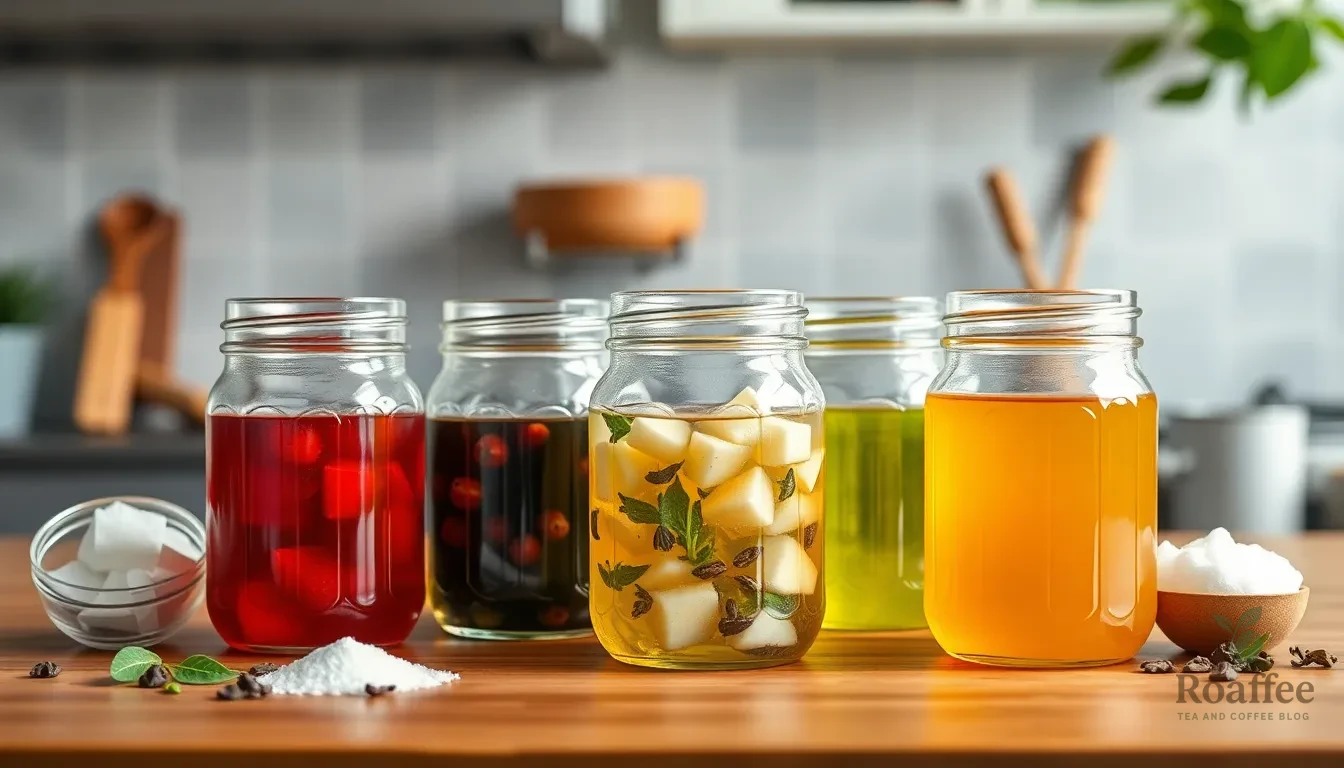
We find tea syrup works exceptionally well as a make-ahead ingredient that simplifies meal preparation and entertaining. The beauty of this sweetener lies in its ability to be prepared days or weeks in advance without compromising quality or flavor.
Batch Preparation Strategy
We recommend preparing multiple tea syrup varieties during a single cooking session to maximize efficiency. Start by brewing different tea bases simultaneously using separate saucepans and allow each variety to steep according to its exact requirements. This approach lets us create several flavor profiles while the kitchen is already set up for syrup production.
Large Batch Scaling
For entertaining or frequent use we suggest doubling or tripling the basic recipe. A large batch maintains the same ratios but requires a bigger saucepan and slightly longer cooling time. We’ve found that preparing 6 cups of water with 12 tablespoons of tea and 3 cups of sugar creates enough syrup for multiple weeks of regular use.
Advance Preparation Timeline
| Timeline | Task | Notes |
|---|---|---|
| 1 month ahead | Prepare and store basic tea syrups | Optimal storage period |
| 2 weeks ahead | Create specialty variations | Peak flavor development |
| 1 week ahead | Prepare cocktail-exact syrups | Perfect for party planning |
| 3 days ahead | Make delicate herbal syrups | Shorter shelf life varieties |
Storage Container Preparation
We always sterilize our storage containers before batch preparation by running glass jars through a hot dishwasher cycle or boiling them for 10 minutes. This extra step ensures maximum shelf life and prevents any unwanted bacterial growth that could compromise our carefully crafted syrups.
Freezer Storage Method
For extended storage we pour cooled tea syrup into ice cube trays and freeze until solid. These frozen cubes transfer easily to freezer bags and last up to 6 months. Each cube equals approximately 2 tablespoons of syrup making portion control simple for future recipes.
Quality Maintenance Tips
We maintain syrup quality by storing containers in the coldest part of our refrigerator away from the door. Temperature fluctuations can cause crystallization or spoilage so consistent cold storage preserves both flavor and texture. Always use clean utensils when removing syrup from containers to prevent contamination.
Troubleshooting Common Issues
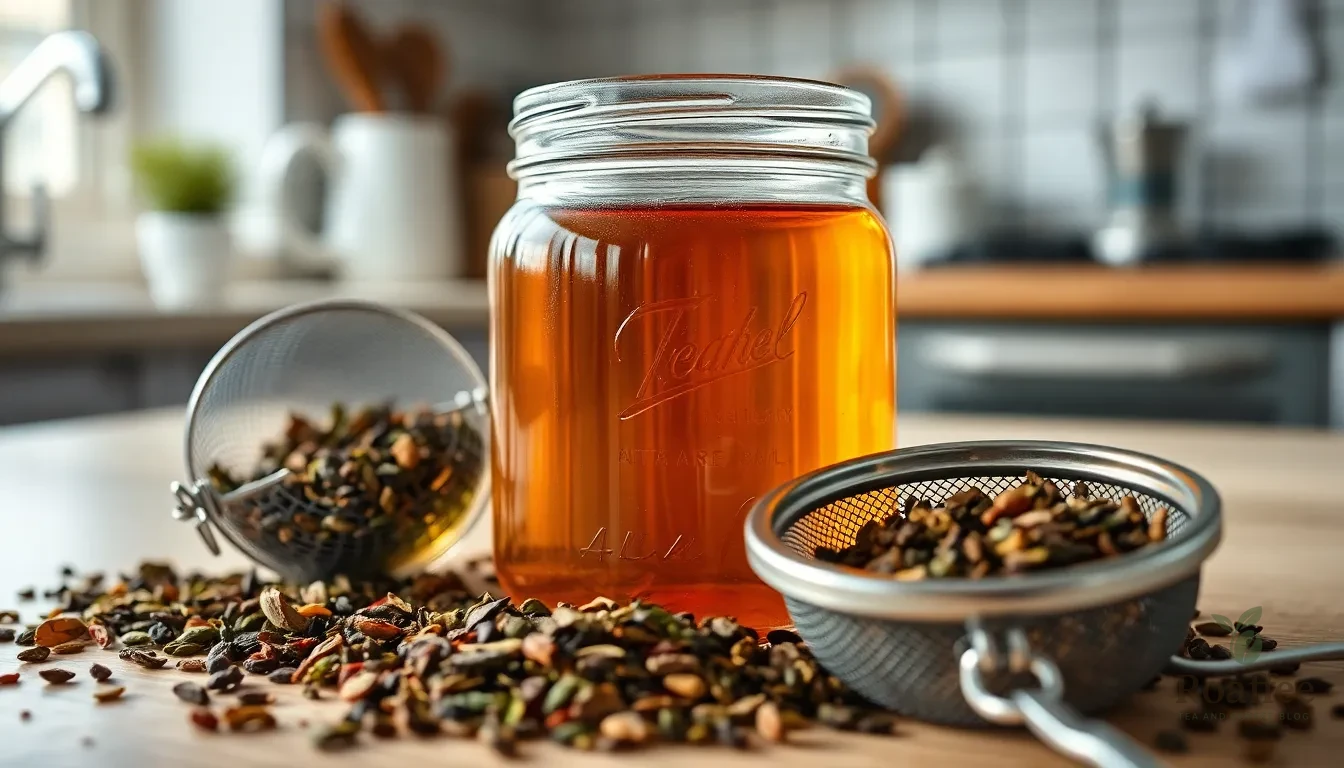
Making tea syrup involves simple chemistry between tea and sugar. But several common problems can occur during preparation that affect the final product’s quality and flavor.
Cloudy syrup often results from insufficient straining or brewing temperature issues. We recommend using a fine-mesh strainer or cheesecloth to remove all tea particles completely. Also overly hot water can extract tannins that create cloudiness. Different tea varieties require exact water temperatures: green tea needs 175°F while black tea performs best at 212°F.
Crystallized sugar happens when sugar doesn’t dissolve completely during the heating process. We suggest adding sugar gradually while stirring constantly to ensure full dissolution. If crystals form after cooling reheat the syrup gently while stirring until crystals disappear. Cold water prevents proper sugar integration so always use the hot brewed tea for mixing.
Weak flavor indicates insufficient tea concentration or improper steeping time. We double the tea quantity rather than extending steeping time beyond recommended limits. Over-steeping creates bitter notes that sugar cannot mask effectively. Each tea type has optimal steeping durations: black tea needs 3-5 minutes while delicate white tea requires only 2-3 minutes.
Overly bitter syrup occurs from excessive steeping or using water that’s too hot for delicate tea varieties. We recommend starting fresh with proper temperature control and timing. Adding extra sugar won’t eliminate bitterness but will only create an unbalanced flavor profile. Green and white teas are particularly susceptible to bitterness when overbrewed.
Separation or layering in stored syrup suggests incomplete mixing or contamination. We ensure thorough stirring during preparation and use clean utensils throughout the process. Water droplets from steam can also cause separation so we cool the syrup completely before sealing containers.
Shortened shelf life typically results from improper storage conditions or contaminated equipment. We sterilize all containers with boiling water before use and store syrup in the refrigerator immediately after cooling. Room temperature storage dramatically reduces shelf life and increases spoilage risk.
Mold growth indicates moisture contamination or non-sterile preparation conditions. We discard any syrup showing signs of mold and start fresh with properly sterilized equipment. Adding a small amount of high-proof alcohol extends shelf life naturally without affecting flavor significantly.
Inconsistent sweetness happens when sugar measurements vary between batches. We use a digital scale for precise measurements rather than volume measurements which can vary based on sugar crystal size. Maintaining consistent ratios ensures repeatable results across multiple batches.
Color changes during storage are normal for some tea varieties but unusual color shifts may indicate spoilage. We monitor stored syrup regularly and note that lighter teas may darken slightly over time while maintaining quality. But dramatic color changes or unusual odors signal the need for replacement.
Conclusion
Creating your own tea syrup opens up endless possibilities for elevating everyday beverages and desserts. We’ve shown you how simple ingredients and basic techniques can transform any tea variety into a versatile sweetener that’ll keep your kitchen creativity flowing.
The beauty of tea syrup lies in its adaptability – whether you’re crafting cocktails mixing coffee drinks or drizzling over pancakes you’re adding depth and complexity that plain sugar simply can’t match. With proper storage techniques your homemade syrups will stay fresh for weeks ready to enhance whatever culinary adventure you’re planning.
Now that you’re equipped with recipes variations and troubleshooting tips there’s nothing stopping you from experimenting with your favorite tea blends. Start with our basic recipe then let your taste preferences guide you toward creating signature syrups that reflect your unique style.
Frequently Asked Questions
What is tea syrup and how is it different from regular simple syrup?
Tea syrup is a concentrated liquid sweetener made by combining brewed tea with sugar. Unlike plain simple syrup, tea syrup adds complexity and depth to recipes by incorporating the unique aromatic essence and flavor characteristics of different tea varieties, creating a balanced sweetness that complements the tea’s natural flavors.
How long does homemade tea syrup last in the refrigerator?
Properly made tea syrup can last up to one month in the refrigerator when stored in clean glass jars or bottles with tight-fitting lids. The high sugar content acts as a natural preservative, helping to extend its shelf life while maintaining flavor integrity.
What equipment do I need to make tea syrup at home?
You’ll need minimal kitchen tools: a digital kitchen scale for accurate measurements, a medium saucepan for heating water, a large mixing spoon or whisk for dissolving sugar, tea infusers or fine-mesh strainers for removing tea leaves, and glass jars with airtight seals for storage.
Can I use any type of tea to make tea syrup?
Yes, you can use any tea variety to make syrup. Different teas create distinct flavor profiles: black tea produces rich syrups, green tea offers lighter notes, and herbal teas provide floral or refreshing qualities. Each type brings unique characteristics to enhance your culinary creations.
What are some popular tea syrup variations I can try?
Popular variations include Earl Grey (with bergamot citrus notes), chamomile (gentle floral sweetness), green tea (perfect for Asian-inspired dishes), and chai (warming spices with robust black tea). Each variation uses specific steeping techniques to maximize flavor and create sophisticated culinary experiences.
How do I know if my tea syrup has gone bad?
Signs of spoilage include a cloudy appearance, unusual odors, or any visible mold growth. Fresh tea syrup should maintain its original color and aroma. Always label containers with the tea variety and preparation date to track freshness and ensure quality.
What’s the basic recipe ratio for making tea syrup?
The basic recipe uses 2 cups of filtered water, 4 tablespoons of loose leaf tea (or 8 tea bags), and 1 cup of granulated sugar. This ratio creates a well-balanced syrup with proper sweetness and tea flavor concentration for most culinary applications.
How can I use tea syrup in cocktails and beverages?
Tea syrup is excellent for cocktails: Earl Grey pairs with gin, chamomile works well in vodka drinks, and green tea enhances whiskey-based beverages. It also elevates coffee drinks, iced teas, and can replace regular sweeteners in any beverage for added complexity and flavor.
What are some creative ways to use tea syrup in desserts?
Tea syrup can infuse cakes and frostings with unique flavors, serve as a pancake or waffle topping, enhance ice cream, or add sophistication to simple desserts. It transforms ordinary recipes into gourmet experiences with its concentrated tea essence and balanced sweetness.
How do I prevent common issues like cloudiness or crystallization in my tea syrup?
To prevent cloudiness, strain the syrup through fine-mesh strainers and ensure proper cooling. Avoid crystallization by completely dissolving sugar while hot and maintaining proper storage temperatures. Use quality filtered water and sterilize storage containers to prevent spoilage and maintain clarity.
